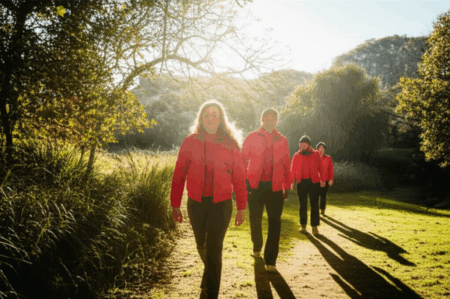Is it possible to build round, strong glutes while maintaining a flat stomach? Absolutely! Many fitness enthusiasts strive for this coveted physique, and with the right approach, it’s entirely achievable. It requires a strategic combination of targeted exercises, a balanced diet, and consistent effort. This guide, inspired by advice from top fitness coaches, unveils eight essential tips to help you sculpt your dream body.
1. Calorie Smart: Embrace a Slight Surplus
To build muscle, including those glutes, you need to consume slightly more calories than you burn. A small calorie surplus of around 300 calories per day is generally recommended. This provides your body with the extra fuel it needs to repair and build muscle tissue after workouts, without leading to excessive fat gain.
- Why it Works: Muscle growth requires energy. A small surplus ensures your body has the resources for muscle protein synthesis.
- How to Implement: Track your current calorie intake for a week to establish a baseline. Then, gradually increase your intake by 200-300 calories, monitoring your body composition and adjusting as needed.
2. Progressive Overload: Challenge Yourself Consistently
Your muscles adapt to the demands placed upon them. To continue seeing glute growth, you must progressively increase the challenge over time. This could mean lifting heavier weights, performing more repetitions, or increasing the difficulty of the exercises.
- Why it Works: Progressive overload forces your muscles to continually adapt and grow stronger to meet the increasing demands.
- How to Implement: Track your workouts and strive to increase the weight, reps, or sets each week. Even small increases can make a big difference over time.
3. Compound & Isolation Exercises: The Best of Both Worlds
A well-rounded glute-building program incorporates both compound and isolation exercises. Compound exercises, like squats and deadlifts, work multiple muscle groups simultaneously, providing a powerful stimulus for overall muscle growth. Isolation exercises, like hip thrusts and glute bridges, target the glutes more directly, allowing you to focus on specific areas.
- Why it Works: Compound exercises build overall strength and muscle mass, while isolation exercises allow you to sculpt and refine the glutes.
- How to Implement: Include a mix of compound exercises (e.g., squats, deadlifts, lunges) and isolation exercises (e.g., hip thrusts, glute bridges, kickbacks) in your workouts.
4. Rotational Movements: Target All Glute Muscles
Don’t neglect the gluteus medius and minimus, which play a crucial role in hip stability and overall glute shape. Incorporate rotational movements to target these often-overlooked muscles.
- Why it Works: Training all three glute muscles (maximus, medius, and minimus) contributes to a well-rounded, 3D glute appearance.
- How to Implement: Add exercises like clamshells, hip abductions, and curtsy lunges to your routine.
5. Slow Tempo: Master the Mind-Muscle Connection
Focus on controlling the movement throughout the entire exercise, rather than simply rushing through the reps. A slow tempo allows you to increase time under tension, which is a key factor in muscle growth.
- Why it Works: Slowing down the tempo enhances the mind-muscle connection, allowing you to consciously engage and activate the glutes.
- How to Implement: Use a controlled tempo of 2-3 seconds for both the concentric (lifting) and eccentric (lowering) phases of each exercise.
6. Cardio: The Smart Way
Cardio can be a valuable tool for maintaining a flat stomach, but it’s important to choose the right type and amount. Excessive cardio can interfere with muscle growth, so prioritize high-intensity interval training (HIIT) or low-intensity steady-state cardio.
- Why it Works: HIIT burns calories efficiently while preserving muscle mass, while low-intensity cardio can improve cardiovascular health without overtaxing your muscles.
- How to Implement: Incorporate 2-3 HIIT sessions per week, lasting 15-20 minutes each. Alternatively, include 30-45 minutes of low-intensity cardio, such as walking or cycling, a few times per week.
7. Bodyweight Finishers: Burnout for Growth
Finish your glute workouts with a set of high-rep bodyweight exercises to maximize muscle fatigue and promote growth.
- Why it Works: Bodyweight finishers help to exhaust the glutes, triggering a greater anabolic response.
- How to Implement: Choose exercises like glute bridges, bodyweight squats, or donkey kicks, and perform as many reps as possible until you reach complete muscle fatigue.
8. Creatine: The Underrated Supplement
Creatine is a well-researched supplement that can enhance muscle strength and power. It can also help you push harder during your workouts, leading to greater muscle growth.
- Why it Works: Creatine increases the availability of ATP, the primary energy source for muscle contractions, allowing you to lift heavier weights and perform more reps.
- How to Implement: Take 3-5 grams of creatine monohydrate daily.
Bonus Tips for a Flat Stomach
While focusing on glute growth, it’s crucial to incorporate strategies to maintain a flat stomach. Here’s how:
- Strengthen Your Core: A strong core not only contributes to a flat stomach but also improves stability and posture. Focus on exercises that engage your entire midsection, like planks, dead bugs, and Russian twists.
- Eat for Definition: What you eat plays a huge role in your results. Prioritize protein (chicken, fish, eggs, tofu) for muscle growth, healthy fats (avocados, nuts, olive oil) for energy, and complex carbs (whole grains, sweet potatoes, veggies) for fuel. Limit sugar and processed foods, which can lead to bloating and hinder definition.
- Stay Hydrated: Drinking enough water helps prevent bloating and keeps your body functioning well.
- Prioritize Gut Health: Incorporate probiotic-rich foods like yogurt and kefir to promote a healthy gut microbiome.
Sample Workout Plan
Here’s a sample workout plan incorporating the tips above:
Workout 1: Compound Focus
- Back Squats: 3 sets of 8-12 reps
- Romanian Deadlifts: 3 sets of 10-15 reps
- Walking Lunges: 3 sets of 10-12 reps per leg
- Glute Bridge: 3 sets of 15-20 reps
- Plank: 3 sets, hold for 30-60 seconds
Workout 2: Isolation Focus
- Hip Thrusts: 4 sets of 12-15 reps
- Glute Kickbacks (Cable or Band): 3 sets of 15-20 reps per leg
- Clamshells: 3 sets of 15-20 reps per leg
- Curtsy Lunges: 3 sets of 12-15 reps per leg
- Russian Twists: 3 sets of 15-20 reps per side
Workout 3: Full Body & Rotational
- Dumbbell Squat with Oblique Twist: 3 sets of 12-15 reps
- Single Leg Deadlift: 3 sets of 10-12 reps per leg
- Lateral Lunge to Knee Drive: 3 sets of 12-15 reps per leg
- Bird Dog: 3 sets of 10-12 reps per side
- Burpees: 3 sets of 10-15 reps
Important Considerations:
- Listen to your body: Don’t push yourself too hard, especially when starting. Gradually increase the intensity and volume of your workouts as you get stronger.
- Proper Form: Maintaining proper form is crucial to prevent injuries and ensure you’re targeting the correct muscles. If you’re unsure about your form, consider working with a qualified personal trainer.
- Rest and Recovery: Allow your muscles adequate time to recover between workouts. Aim for 7-9 hours of quality sleep each night and incorporate rest days into your schedule.
- Consistency is Key: Transforming your body takes time and effort. Be patient, stay consistent with your workouts and diet, and you will see results.
Common Mistakes to Avoid
- Neglecting Glute Activation: Before starting your workout, perform glute activation exercises like banded walks and glute bridges to ensure your glutes are firing properly.
- Overtraining: Avoid working your glutes too frequently, as this can lead to fatigue and hinder muscle growth. Allow for adequate rest and recovery between workouts.
- Poor Form: Bad form is probably the top reason you’re not seeing results.
- Not Eating Enough: Calories and Protein are important to grow glutes.
Success Stories and Motivation
Transforming your body takes time, but small, consistent steps lead to big changes. Remember, every person’s body is unique, so listen to yours and enjoy the journey! There are numerous success stories of individuals who have achieved significant glute growth while maintaining a flat stomach, showcasing the power of dedication and a well-structured approach.
The Takeaway
Building your glutes while keeping a flat stomach requires a multifaceted approach that combines targeted exercise, a balanced diet, and consistent effort. By incorporating these eight tips into your fitness routine, you can work towards achieving your dream physique. Remember to be patient, listen to your body, and celebrate your progress along the way.







